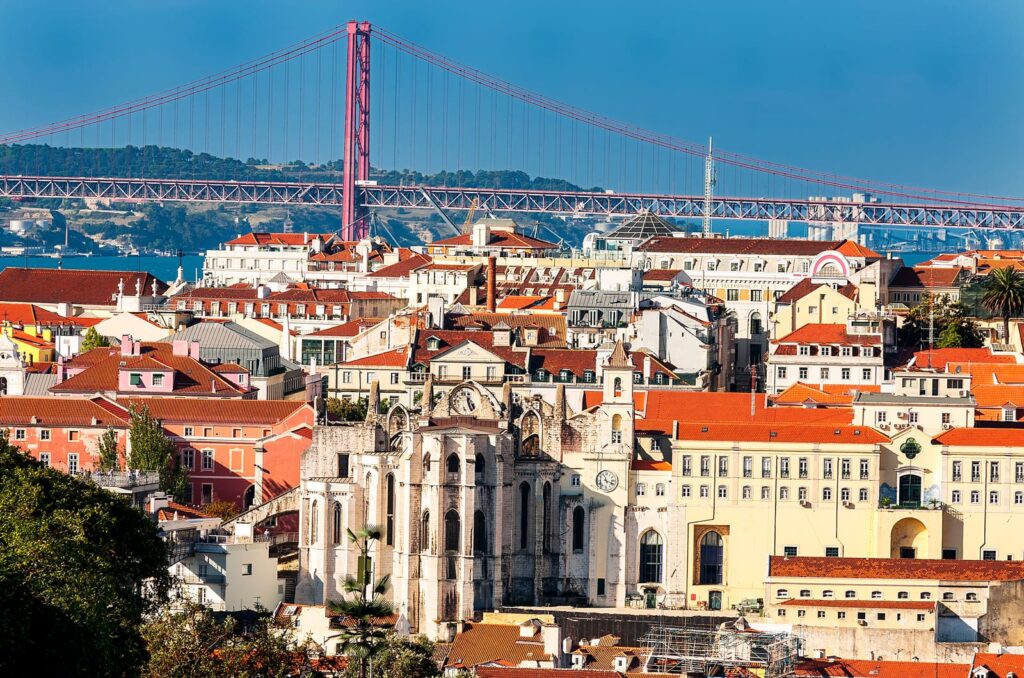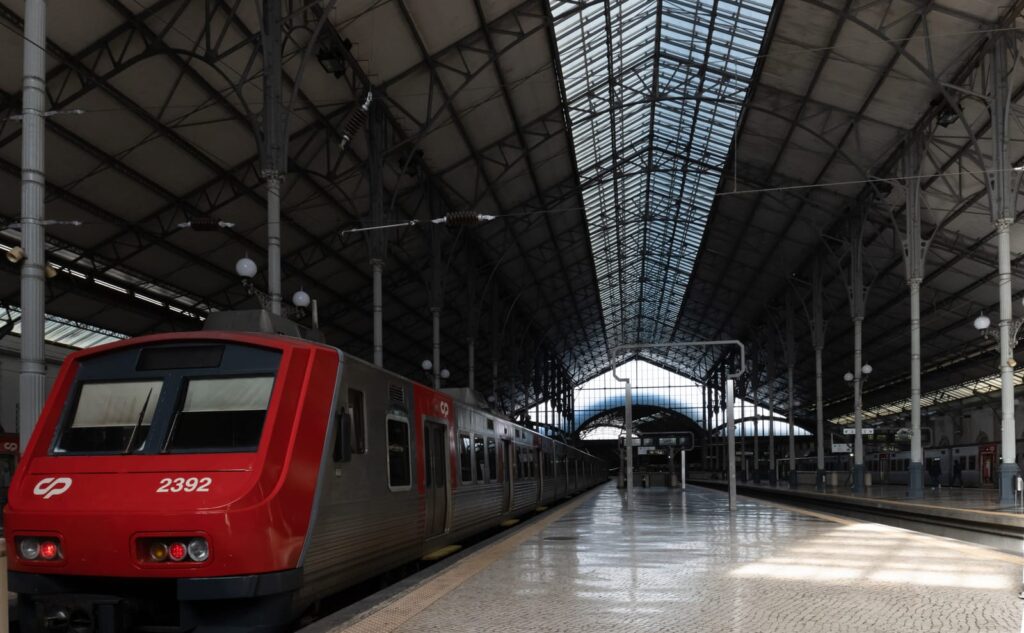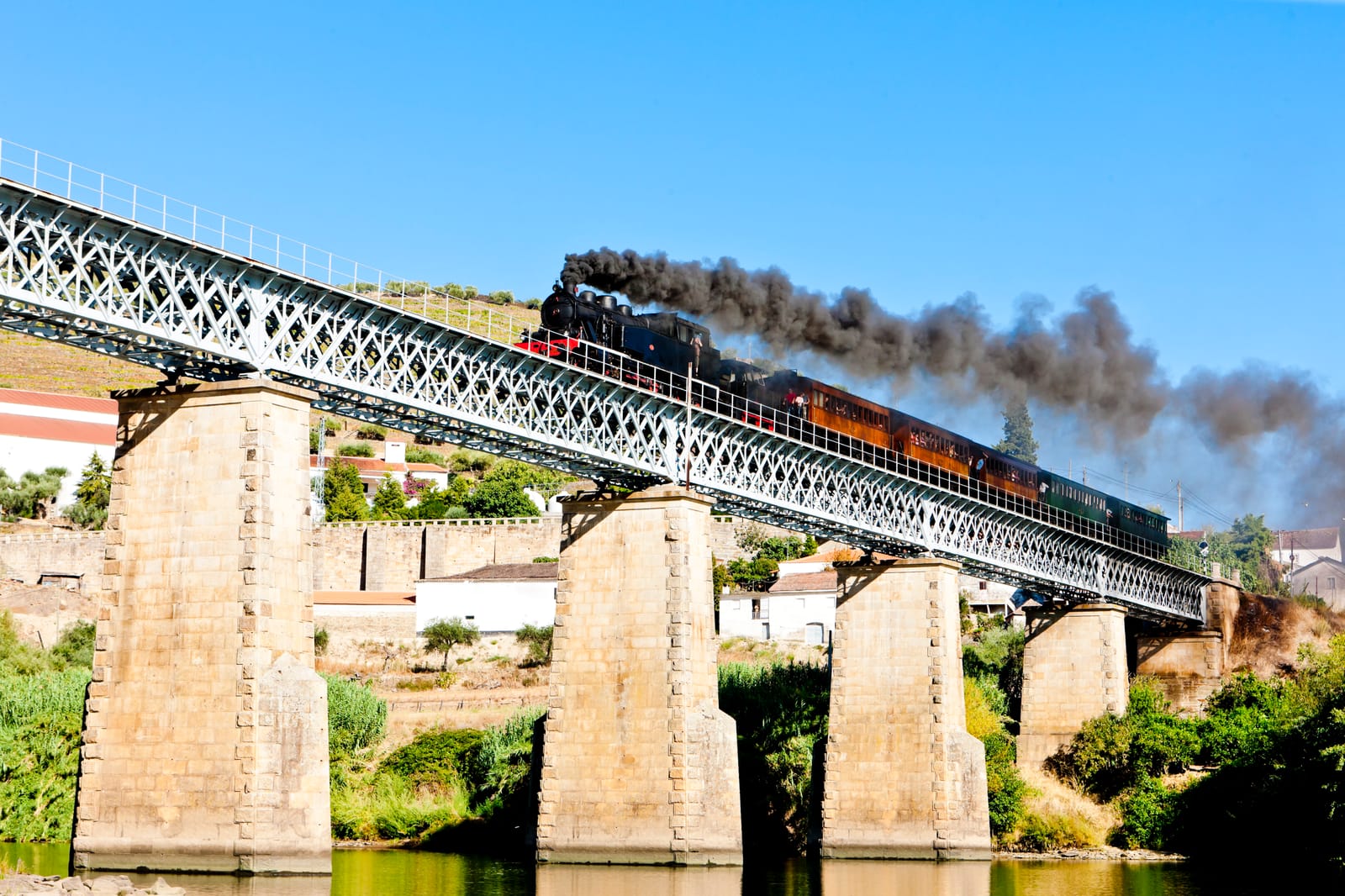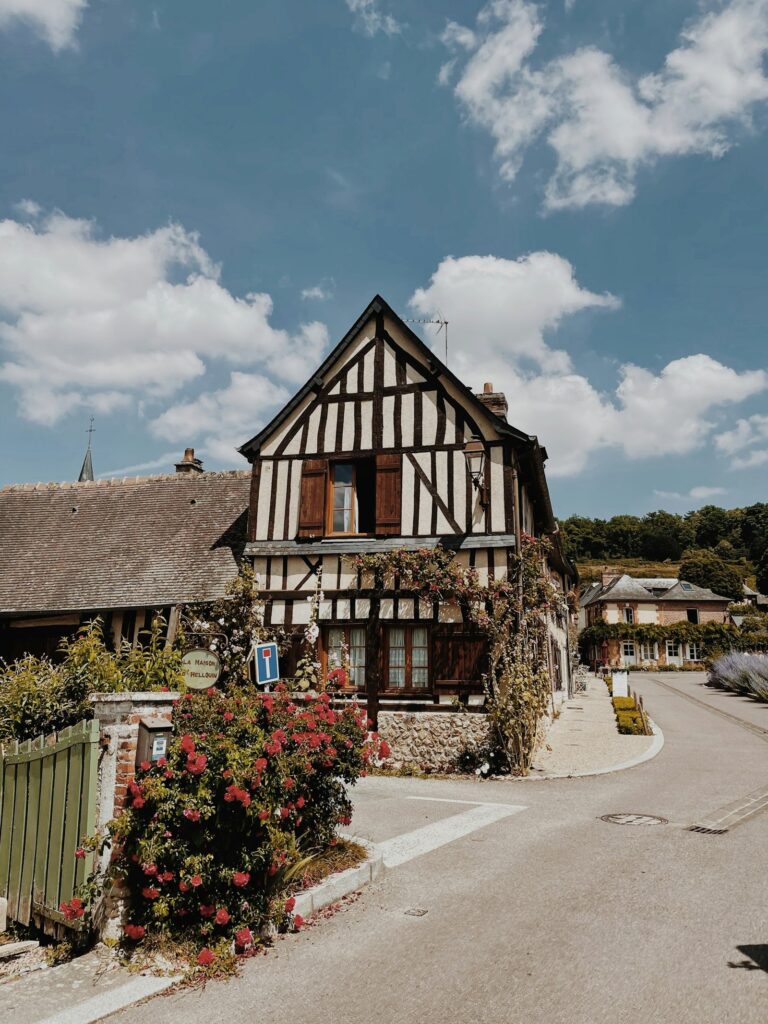Lisbon to Porto Train: Your Guide to Scenic Travel in Portugal
Traveling from Lisbon to Porto by train offers a scenic and comfortable journey between two of Portugal’s most vibrant cities.
Running multiple times a day, the train journey typically takes around 3 hours and 46 minutes, making it a convenient option for exploring.
Along the way, you’ll witness picturesque landscapes that showcase the beauty of the Portuguese countryside.
Purchasing your tickets is simple, with prices starting from about 26 USD, which can vary based on the time of booking and travel class. You can easily book your tickets online for a hassle-free experience.
Consider downloading these apps for traveling in Europe.

This journey not only provides efficiency but also a chance to relax and enjoy the sights without the stress of traffic.
Whether you’re a first-time traveler or returning to discover more of Portugal, the train ride from Lisbon to Porto is a delightful experience that enhances your travel adventures. You’ll find it a perfect way to transition between these two culturally rich cities.
Portugal Itinerary: Your Perfect Guide to Exploring the Best of Portugal
History of Train Travel Between Lisbon and Porto
Train travel between Lisbon and Porto has a rich history that reflects the significant developments in transportation within Portugal. From humble beginnings, the railway evolved into a modern marvel, transforming how you connect with these two vibrant cities.
Early Rail Developments
The first railway line connecting Lisbon and Porto opened in 1887, marking the beginning of an essential transportation link. Initially, trains were slow and relied on steam engines, providing a novel but gradual means to traverse the approximately 320 kilometers (200 miles) between these major urban centers.
The original route primarily served freight and passengers, with stations featuring basic amenities. As ridership grew, the need for speedier and more efficient services became apparent.
These early developments laid the groundwork for future enhancements and demonstrated the potential of rail travel in enriching the cultural and economic landscape of Portugal.
Modern Advancements
In recent decades, significant advancements have transformed your train experience between Lisbon and Porto. The introduction of the Alfa Pendular service in 1999 revolutionized travel with its high-speed capabilities, allowing trains to reach up to 220 km/h (136 mph).
These trains dramatically reduced journey times, making it possible to travel between the two cities in approximately 2 hours and 45 minutes.
Refined amenities, including comfortable seating and modern facilities, elevate the travel experience, making it not just efficient but also enjoyable.
Today, regular services maintain a reliable schedule, catering to both tourists and locals. Upgrades to infrastructure and technology continue to improve travel safety and comfort, ensuring that this once-novel mode of transport remains a preferred choice for many.
Planning Your Trip
When planning your journey on the train from Lisbon to Porto, consider key factors like the best times to travel, ticket types available, and seating options. A little preparation can enhance your experience and make for a smooth trip.

Best Times to Travel
The best time to travel between Lisbon and Porto is typically during the spring (April to June) and fall (September to October). During these months, you’ll find pleasant weather and fewer crowds.
Peak summer can be hot and busy, which might not be ideal for everyone. If you want lower fares, consider traveling during weekdays instead of weekends, as ticket prices can fluctuate based on demand.
To avoid stress, check the train schedules in advance. Trains depart regularly throughout the day, giving you flexibility to choose a time that suits you.
Ticket Types and Costs
Tickets for the Lisbon to Porto train vary based on class and type. The most common options include First Class and Second Class.
- First Class: Includes larger seats and more comfort, generally costing around €40–€60.
- Second Class: A bit less spacious but perfectly comfortable, usually priced between €25–€40.
You may also find discounts for early bookings and round-trip purchases. Alfa Pendular trains, known for their speed, are slightly more expensive but reduce travel time, making them a great option.
Booking in advance is advisable, particularly during peak tourist seasons, to secure the best seats and prices.
Seating Options and Comfort
On the train, you can choose from various seating options to match your comfort needs.
First Class offers wider seats with more legroom, making it perfect for long journeys. You can also enjoy designated quiet zones for a more relaxed trip.
Second Class seats are comfortable and allow you to enjoy beautiful views of the countryside. Both classes typically have access to power outlets, Wi-Fi, and restrooms.
For a more spacious experience, consider booking a seat by the window to fully enjoy the stunning landscape along the route. Make sure to check for available amenities when purchasing your ticket to enhance your travel experience.
Train Routes and Services
When traveling from Lisbon to Porto, understanding the routes and services can enhance your journey. The train options available ensure a comfortable and quick ride, with various amenities to enjoy along the way.
Main Line Servicing Lisbon to Porto
The primary service connecting Lisbon to Porto is the Alfa Pendular, known for its speed and efficiency. Traveling at speeds of up to 220 km/h, this service links Lisbon’s Santa Apolónia and Oriente stations to Porto’s Campanhã and São Bento stations.
The journey typically lasts around 2 hours and 45 minutes, making it a convenient option for both business and leisure travelers. Train frequency is good, with several departures throughout the day, allowing you to choose a time that works best for your schedule.
Stops Along the Route
During your journey, the train will make key stops at several cities and towns, providing opportunities to explore additional locales. Major stops may include:
- Coimbra: A historic city known for its university.
- Aveiro: Famous for its canals and colorful boats.
- Braga: A city filled with architecture and cultural sites.
While the Alfa Pendular service offers limited stops, each stop enhances the experience, allowing glimpses into Portugal’s diverse regions. For a more scenic ride, consider taking the Intercidades service, which also provides access to these charming stops along the way.
Onboard Amenities
Traveling on the Alfa Pendular service means you can enjoy several amenities designed for your comfort.
You’ll find spacious seating arrangements, ensuring ample legroom as you travel. Complimentary Wi-Fi allows you to stay connected, whether you’re working or just browsing.
Refreshments are available for purchase, ranging from coffee to light snacks, so you can indulge during your trip. If you prefer a quiet space, there are dedicated silence cars for those looking to relax or read. This blend of convenience and comfort makes your train journey from Lisbon to Porto more enjoyable.
Booking and Ticketing Process
When planning your trip from Lisbon to Porto, understanding the booking and ticketing process is essential. Several options exist, ranging from online platforms to in-person purchases at train stations, as well as discount passes that can save you money.
Online Booking Platforms
Booking your train tickets online is one of the most convenient methods. You can use platforms like Rail.Ninja or Rome2rio to find various schedules and ticket prices.
These platforms often provide a user-friendly interface, allowing you to choose your departure time and class seamlessly.
It’s advisable to book tickets early to secure lower fares, as prices can rise significantly as the date approaches.
You can typically find options for both early morning and late evening trains. Most sites accept major credit cards, ensuring a straightforward payment process. Just be sure to check the cancellation and refund policies before completing your purchase.
Station Purchases
If you prefer to purchase your tickets in person, you can visit train stations in Lisbon. Tickets can be bought at ticket counters or through self-service machines.
The main station, Santa Apolónia, has English-speaking staff ready to assist you. When opting for a station purchase, it’s helpful to arrive a bit early to avoid any last-minute rush or long lines.
Be aware that ticket prices at the station can vary based on the time of day. Peak travel times may have limited availability and higher prices. Additionally, having cash handy can be advantageous if you encounter any issues with card machines.
Travel Passes and Discounts
For frequent travelers or those planning multiple stops, considering travel passes might be beneficial. Some options offer unlimited travel for a specified period, which can save you money.
Discounts are often available for students, seniors, and groups, so be sure to inquire during your booking. Moreover, many online platforms offer early bird discounts—booking several weeks in advance can lead to significant savings.
Be sure to carry any necessary identification when using discounts, as train staff may request verification. Being aware of these options allows you to enjoy your journey without overspending.
Preparing for the Journey
Before you embark on your train journey from Lisbon to Porto, it’s essential to understand the guidelines regarding luggage, accessibility, and on-board etiquette. Being informed will help ensure a smooth and enjoyable experience.
Luggage Guidelines
When traveling by train, it’s important to know the luggage policies. You are generally allowed to bring two large pieces of luggage, along with a small carry-on bag.
Luggage Size and Weight:
- Large bags: Up to 85 cm (33 inches), maximum weight of 30 kg (66 lbs)
- Carry-on bags: Must fit in the overhead compartment or under the seat
If you have more bags, extra fees may apply. It’s best to keep your luggage manageable, so you can move comfortably through the train.
Consider using a lock on your bags for added security, especially during your travels between cities.
Accessibility and Special Needs
If you require special assistance, many train services offer support for passengers with disabilities. Ensure you communicate your needs when booking your ticket.
Available Services:
- Wheelchair access at major stations
- Assistance with boarding and disembarking
- Designated seating for passengers with reduced mobility
Arriving early at the station will give you time to seek assistance. Additionally, staff members are generally friendly and willing to help, enhancing your travel experience.
On-Board Rules and Etiquette
To ensure a pleasant journey for everyone, adhere to basic train etiquette.
Key On-Board Etiquette:
- Keep noise levels down; use headphones for music or videos
- Keep your area clean and dispose of trash properly
- Be considerate when using tables or seats in shared spaces
It’s also courteous to give up your seat to elderly passengers or those with special needs. Following these guidelines will create a harmonious environment for all travelers. Enjoy your trip from Lisbon to Porto!
Arrival in Porto
As you arrive in Porto, the first thing you’ll notice is the vibrant atmosphere of the city. The experience starts at the train station, which is equipped with several amenities and ample options for your onward journey.

Porto Train Station Facilities
Porto’s main train station, São Bento, is known for its stunning architecture and beautiful azulejos (decorative tiles). Upon entering, you’ll find a spacious waiting area, ticket counters, and information desks.
Facilities include:
- Restrooms: Clean and accessible on multiple levels.
- Waiting Areas: Comfortable seating to relax before your next steps.
- Cafes and Shops: Grab a coffee or a snack to fuel your exploration.
Don’t miss the large wall tiles depicting historical events, which make your arrival even more special.
Transportation Options from Porto Station
Once you’re ready to explore, several transportation options await you at São Bento:
- Metro: Convenient connections to key locations in Porto.
- Buses: Various lines connect you to different parts of the city.
- Taxis and Rideshares: Easily available right outside the station for direct transport.
You can also enjoy a pleasant walk from the station to nearby attractions like Clérigos Tower and Livraria Lello, which are just a short distance away.
Exploring Porto After Your Train Ride
After settling in, it’s time to explore Porto. The city is renowned for its riverside charm and historic neighborhoods.
You might want to visit:
- Ribeira District: Stroll along the Douro River and admire the colorful buildings.
- Port Wine Cellars: Explore the famous wine cellars, just a short walk across the river in Vila Nova de Gaia.
Make sure to try a Francesinha, a local sandwich specialty, as you soak in the city’s rich culture. With so much to see and do, Porto promises an unforgettable experience right from your arrival.
Sustainability and Train Travel
Traveling by train not only connects vibrant cities like Lisbon and Porto but also offers a greener alternative to other forms of transportation. Understanding the environmental impact of your travel choices and the eco-friendly initiatives of rail companies can enhance your travel experience while promoting sustainability.
Environmental Impact
Train travel is one of the most environmentally friendly ways to journey between cities. Trains produce lower carbon emissions per passenger compared to cars and airplanes. According to studies, trains can emit 70% less CO2 per kilometer than planes.
In addition, trains create less noise pollution, making them a better choice for communities near travel routes. By opting for trains, you contribute to reducing traffic congestion and lowering air pollution. This sustainable mode of transport can significantly lessen your travel footprint.
Eco-Friendly Initiatives by Rail Companies
Many rail companies are making strides in sustainability.
For instance, some have invested in energy-efficient trains that run on renewable energy sources such as wind and solar power.
Several operators have introduced waste reduction programs on trains. This includes recycling programs and initiatives to minimize single-use plastics.
You might also find that many train stations now feature green roofs and energy-saving systems.
These developments not only enhance the sustainability of train travel but also improve the overall customer experience.







